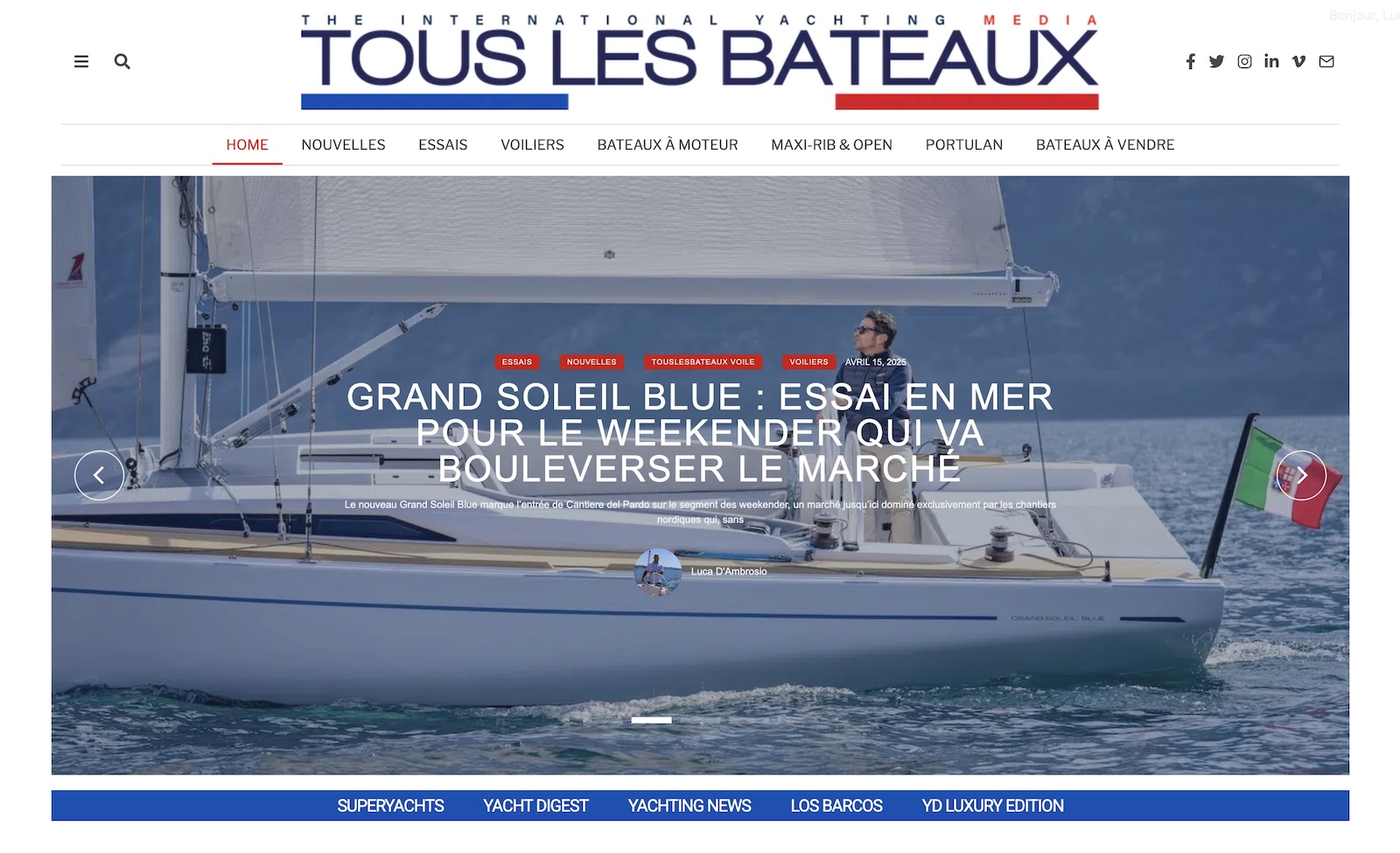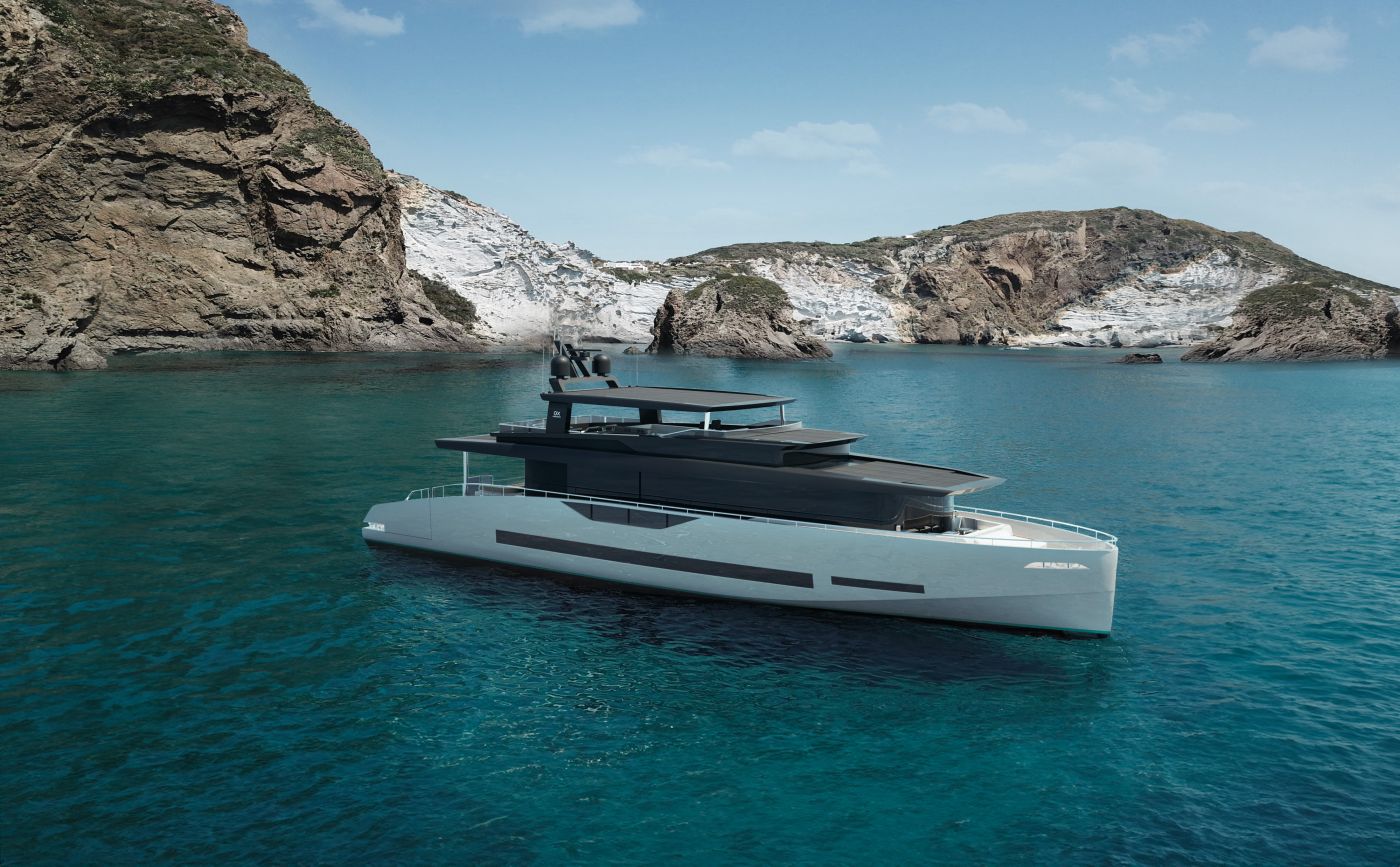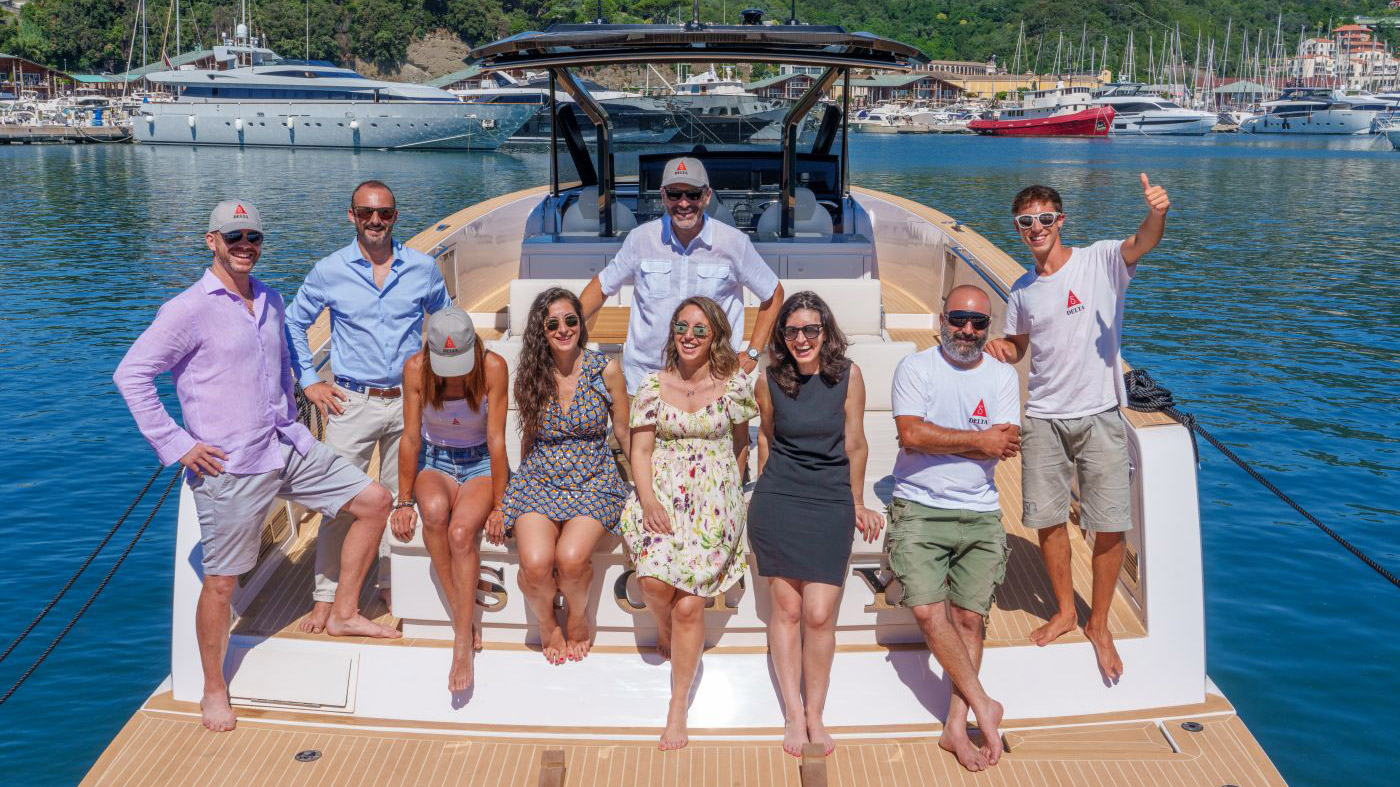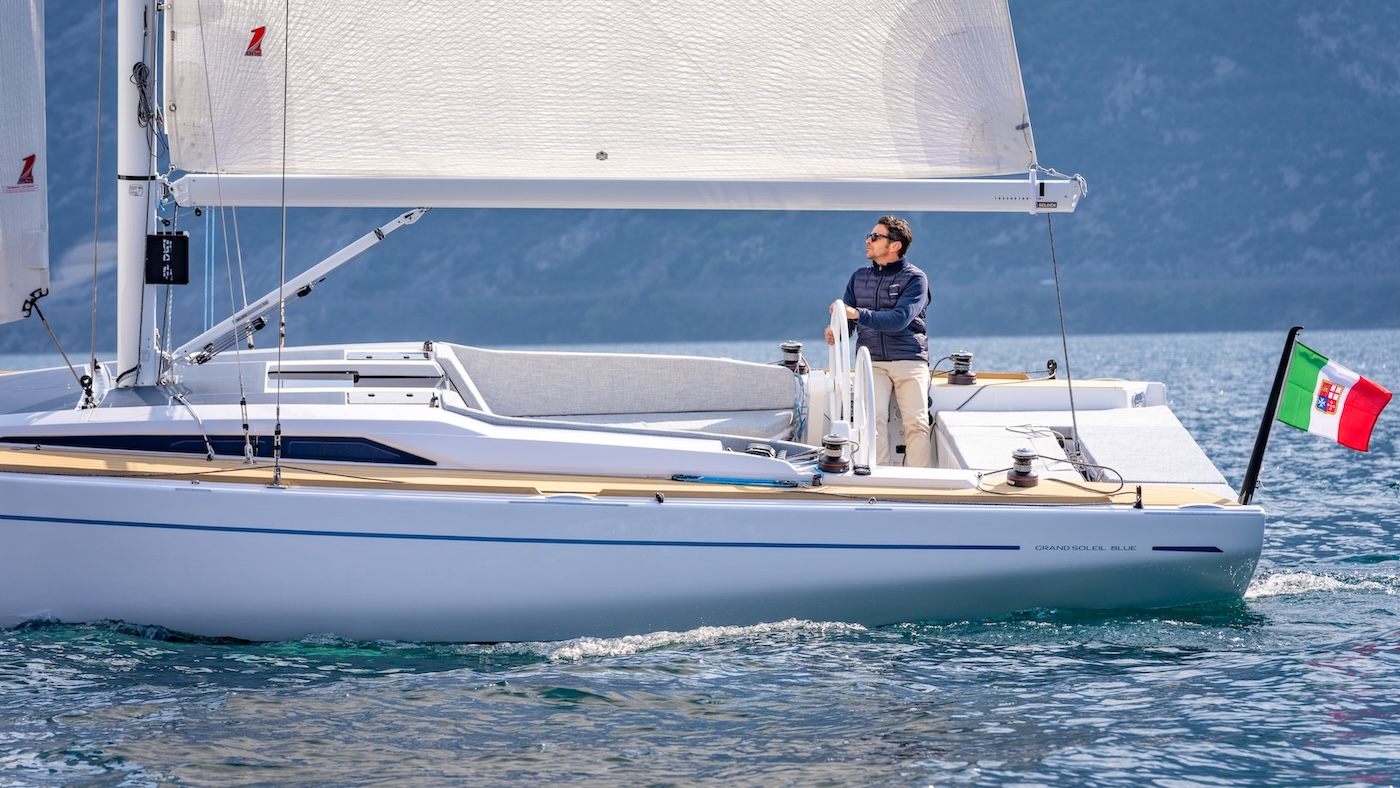After a hard weekend of storms, Cannes offers us a little taste of summer in these days of April. Rough sea, wind and rain have characterized the last two days that Jeanneau team has spent carrying around dozens of potential clients arrived in the French small city to test the many sailing and motorboats of the shipyard before deciding on a possible purchase.
These are tales tinged with satisfaction, the typical one of those who sail under hard conditions and are proud of their own sense of belonging to a team: ” That’s a sign that our boats are really good“, Jeanneau sailors tell us on the quay.

Yes, it’s true, that’s a binding statement that we’d better to justify.
Let’s start from design. Vittorio and Camillo Garroni, two historic designers who have signed many Jeanneau creations, show all their experience and authority in this Sport version of the 680 Flybridge by imposing a purely Italian elegance and style concept featuring no contamination. Of course, that’s just our personal deduction but what is certain is that there’s a world of difference between the design of the classic 680 Flybridge and that one of the Sport version.
Lines tilt and make the boat silhouette extremely streamlined and harmoniously attached to the hull. Designers have successfully managed to combine sporty lines with classic elegance.
Interiors
The same can be said of interior design. The lounge is accessible from a not too big cockpit, completely sheltered from the aft section of the flybridge and furnished in a simple elegant way with just a sofa positioned next to the transom and opposite a table with two chairs. This space, accessible from a beautiful aft swimming platform, covered with teak and equipped with an electrical lift system, includes some considerable technical element.

Then, two electric winches are positioned on the two sides and high enough to tension mooring ropes.
Once inside, we stop for a while to admire the element which dominates everything in the first instants: light.
Of course, on a boat of almost 22 metres, it’s not difficult to obtain windows. But on the Prestige 680, the natural element is significantly enhanced by specific design choices.

Wide and enveloping windows, a sunroof over the pilot station and a large glazed main door contribute to create a well-sheltered environment offering a large opening, even in visual terms, outwards.
Furniture arrangement contributes to define three different zones. The first, positioned on the left of the entrance, is the living room. It is furnished with a six-seater table, a L-shaped sofa and three chairs. On the starboard side, there’s the galley which, thanks to its full equipment, its proximity to the cockpit and the presence of a central wet bar, can be considered as a second distinct environment despite its proximity to the living room.


The Vip cabin is a little smaller than the master one and furnished with a double bed positioned along the longitudinal axis of the hull. It, too, is equipped with an en-suite bathroom with shower and bath tub, identical to that one of the master cabin.
Finally, the third cabin includes two twin beds which can be converted into a unique double bed and a bathroom accessible from the external corridor.
A crew cabin is located aft of the cockpit and is accessible through a watertight door obtained in the transom and equipped with two twin beds.
Flybridge
Compared with the classic Flybridge version, the Fly Sport one must necessarily give up a little room to the benefit of its more aggressive lines but without never compromising the completeness of both equipment and comfort.
Starting from the stern, where there is a dinette furnished with a U-shaped sofa enveloping a teak table which can be converted into a large sun pad. Towards the bow, we find a kitchen cabinet on the starboard side equipped with a 30-litre refrigerator, a grill and a sink. Finally, the pilot station features two seats (for pilot and co-pilot) and replicates the same equipment we have seen in the inner wheelhouse.
Sea trial
We go out the harbour of Cannes steering from the inner wheelhouse which we get acquainted with. Adjustable seats and steering wheel put us at our ease. First of all, we immediately appreciate the excellent external visibility, completely devoid of any area of shadow. On the Prestige 680 Fly Sport, view on the outside is always wide.
Out of the port, weather conditions are very good: just a light breeze and small ripples. We immediately use throttle sync mode so that we can use just one throttle as well as the automatic trim control system which adjusts trim position according to speed. The excellent sea conditions gives us this luxury.
While we speed up a little to reach 2,000 revolutions, we experience a flashback that take us back many years, when, during the sea trial of a Prestige boat, silent was not a positive thing. At cruising speed, we open the sunroof and the wide cockpit main door. What we notice is an excellent soundproofing of the cabin. With everything open, in fact, we can keep on chatting with a normal tone of voice.

At full throttle, speed almost reaches 30 knots with full tank and 7 passengers aboard.
We disengage the automatic trim and test planing performances. With negative trim and at full throttle, we start planing in 9 seconds at 16 knots. The Prestige 680 Flysport “flies” heading to Santa Margarita Island.
When we come back to the port, it’s a pleasure to see the captain involved in the mooring manoeuvre. The inner joystick activates the two Volvo Ips 900 engines as well as the bowthrust, taking the boat perfectly aligned to the berth. We don’t need to use the joystick in the cockpit. The manoeuvre is extremely simple.
Conditions of the sea trial. The test took place opposite Cannes, with rough sea, light breeze, 7 passengers on board, 90% fuel and 30% water.
Technical specifications
| Length Overall | 21.46 m |
| Beam | 5.33 m |
| Draft | 1.58 m |
| Displacement | 39.600 kg |
| Fuel Tank | 3.450 l |
| Water Tank | 920 l |
| Engines | 2 Volvo Ips 900 |
| Engine rpm | Speed (knots) | Fuel consumption (l/h) |
|
500 |
5 | 11 |
|
1,500 |
15 | 140 |
|
2,000 |
22 | 230 |
|
24,000 |
29.7 | 334 |




























